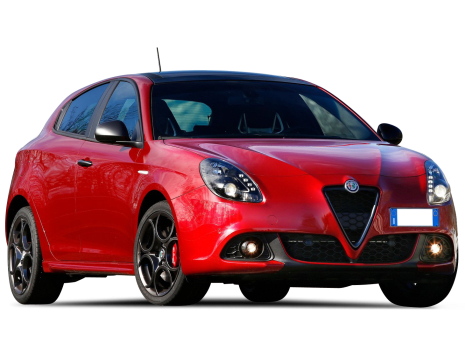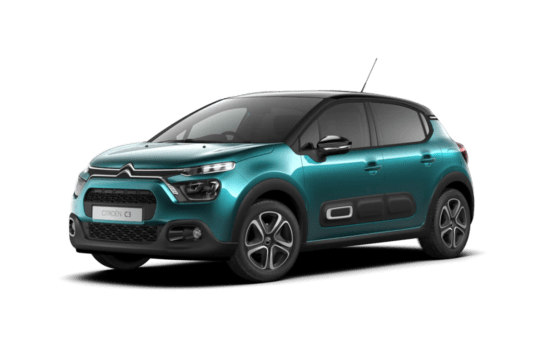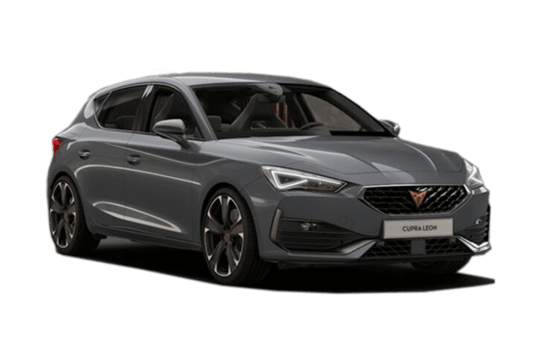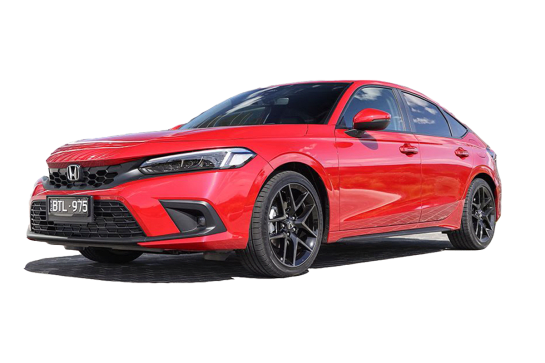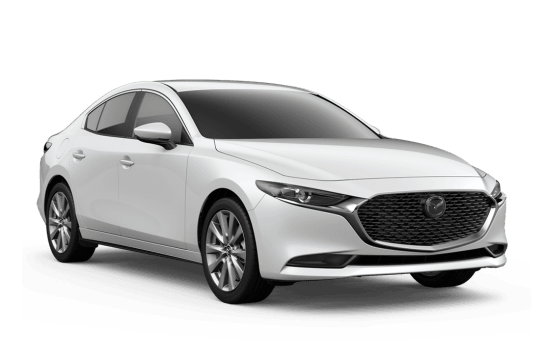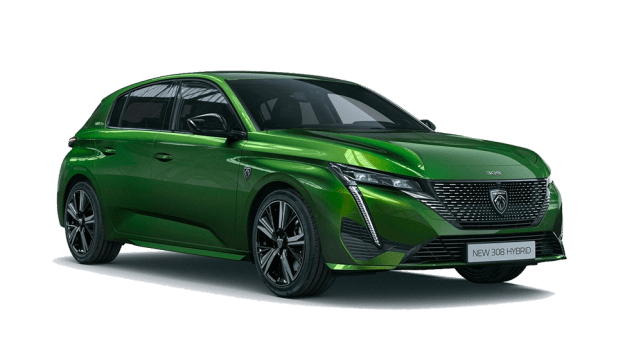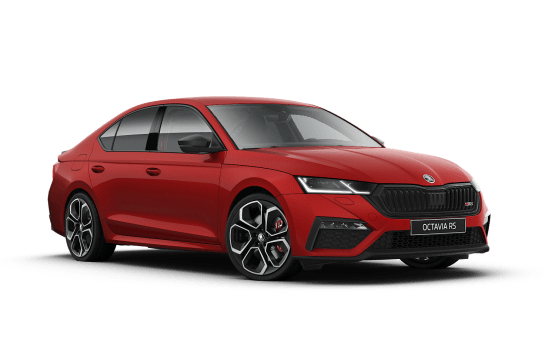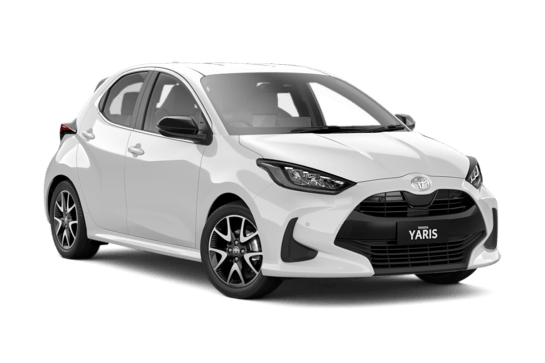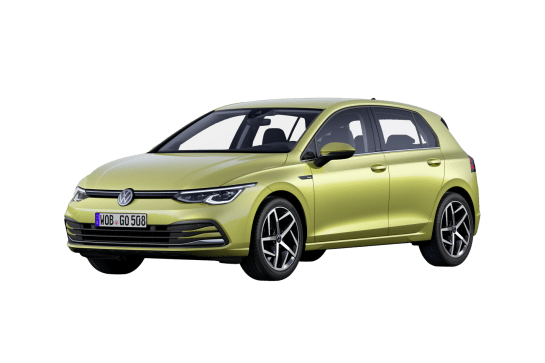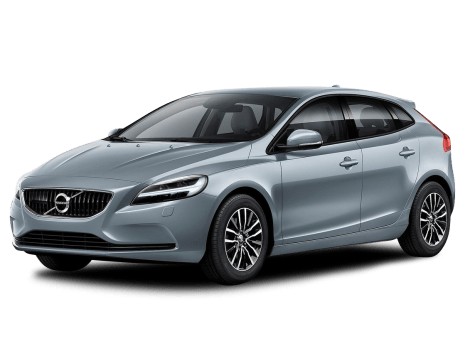
Ford Focus VS Toyota GR Yaris
Ford Focus
Likes
- Great chassis
- Well-equipped
- Surprising engine
Dislikes
- Optional advanced safety
- Better tyres would be nice
- Too many optional colours
Toyota GR Yaris
Likes
- Brilliant powertrain
- Superb dynamics
- Relative refinement
Dislikes
- Some hard plastics in cabin
- Oversize interior mirror
- Audio exhaust noise enhancement
Summary
Ford Focus
Ford's small hatch, the Focus, is criminally under-bought in Australia. The latest model is one of the best hatchbacks on the road and when you chuck in the decent price, impressive equipment and absurdly powerful engine for its size, it's a winner.
But you lot? You don't buy it in nearly the kinds of numbers it deserves. Partly because there isn't a bait-and-upsell boggo model to lure you in, partly because it's got a badge that is not exciting Australians any more and partly because it's not a compact SUV.
Or is(n't) it? Because alongside the ST-Line warm hatch is the identically priced and therefore technically a co-entry level model; the Focus Active. Slightly higher, with plastic cladding, drive modes and a conspicuous L on the transmission shifter, it's a little bit SUV, right?
| Safety rating | |
|---|---|
| Engine Type | 1.5L turbo |
| Fuel Type | Regular Unleaded Petrol |
| Fuel Efficiency | 6.4L/100km |
| Seating | 5 seats |
Toyota GR Yaris
It's a rally rocket for the road. A lightweight, pocket-sized, all-wheel drive, three-cylinder turbo screamer with enough grunt to blow the doors off performance cars twice its size.
Yes, it's the much-anticipated Toyota GR Yaris, the basis for homologation of Toyota's 2021 World Rally Championship contender. And remember, Toyota won the manufacturer's title in 2018, the driver's championship last year, and is leading the WRC pack in 2020. So, it's a significant arrival, packing a huge amount of tech into a compact, entertainingly racy package.
Toyota invited us to a local launch program, including open and closed road driving opportunities, so we could see what all the fuss is about.
| Safety rating | |
|---|---|
| Engine Type | 1.6L turbo |
| Fuel Type | Premium Unleaded Petrol |
| Fuel Efficiency | 7.6L/100km |
| Seating | 4 seats |
Verdict
Ford Focus7.4/10
Ten years ago, the idea that the higher-riding version of a hatchback would be a good city car would have been laughable. The Focus Active is pitched as a kind of SUV with its different low-grip driving modes, which you'll never touch if you stick to the city.
The Ford Focus is genuinely a brilliant car, no matter where you take it. The Active takes a terrific chassis, tweaks it for comfort but, ironically, doesn't lose much of the speed.
Toyota GR Yaris8.3/10
In late 2020, Toyota Australia offered the first 1000 examples of the GR Yaris at a discount to help establish the car and the GR brand. The first 250 were accounted for in 30min. That grew to 560 in 24 hours, and all 1000 were spoken for in seven days. Another hundred, at a slightly higher price, were snapped up in only a few weeks.
There'll be fresh supply in 2021, although it's not yet known how many or exactly when. But we do know they'll be at full retail price. Even at $50K, I'd say, if you're thinking about it, don't hesitate. This is an instant classic.
Design
Ford Focus
For a fairly conservative hatchback, the Focus came under fire for what some termed its derivative styling. I quite like it, and not just because the styling work was led by an Australian. The front end is very much family Ford, as long as it's the European arm of the family, fitting in with its smaller sibling, the Fiesta. The Active scores the usual black cladding, higher ride height and smaller diameter wheels, in exchange for more compliant, higher-profile tyres. All of that takes nothing away from a design that I think looks pretty good.
The cabin is well put together, with just that oddly angled touchscreen causing me a bit of a twitch. The design is a fairly steady Ford interior with a lot of switchgear shared with the Fiesta, but it's all quite nice. The materials feel mostly pleasant and the hardwearing fabric on the seats feels right for this kind of car.
Toyota GR Yaris8/10
First thing you'll notice is that this is a three-door body that's waaay lower and waaay wider than the standard five-door Yaris.
That's because World Rally Championship regulations for 2021 demand a competition car's bodywork must be close to the road car it's based on.
| (mm) | Yaris five-door | GR Yaris | +/- |
| Length | 3940 | 3995 | +55 |
| Width | 1695 | 1805 | +110 |
| Height | 1505 | 1455 | -50 |
| Wheelbase | 2550 | 2558 | +8 |
| Track (fr) | 1480 | 1535 | +55 |
| Track (rr) | 1475 | 1565 | +90 |
The GR's roof tapers steeply at the rear, being 50mm shorter than the standard five-door overall, but 90mm closer to the ground at the trailing edge of the roof. Combine that with frameless doors and you have a close to coupe look.
It's offered in the Gazoo Racing colours of black, red and white, specifically, 'Tarmac Black' (metallic), 'Feverish Red' (mica-metallic), and 'Glacier White' (solid).
The GR sits on a new, dedicated TNGA platform, essentially combining the front end of the Yaris (GA-B platform), with the rear of the Corolla (GA-C), and you'll understand why a bit later.
It shares just three exterior components with the Yaris hatch – headlights, tail-lights and mirrors. And the car stands apart thanks to its more aggressive grille with huge front air intakes.
There's also a rear spoiler, side skirts, and fat fenders, with 18-inch Enkei forged alloy rims sitting under them. They're shod with high-performance Dunlop SP Sport Maxx rubber (225/40).
The wider tracks, greater overall width, fat rubber, and pumped guards give the car an aggressive stance and tough look. Like a muscular terrier ready to chase down whatever you throw at it.
The headlights, taillights and front and rear fog lights are LED. And there's tricky aero everywhere, from spats in front of each tyre, to multiple underbody covers, and steps built into the inside of the rear bumper.
Weight has been carved off all around the car, but the highlights are a carbon roof, aluminium bonnet, doors and tailgate, and the body uses lots of lightweight, high-tensile steel.
Inside the sports front seats feature suede inserts and leather accents, there's a small-diameter, leather-trimmed steering wheel, and a short-throw gear shift and handbrake.
The dash is a neat, two-tier design, with the 7.0-inch media screen standing proud at the centre of the upper level. The top part is covered in a soft-touch layer, but the plastics used on the lower dash section and doors are unforgivingly hard.
A simple instrument binnacle houses a large speedo and tacho dials sitting either side of a 4.2-inch multi information display, offering an array of details including turbo pressure and gear-shift indicators.
Practicality
Ford Focus
The Focus is quite roomy compared to other cars in its class. The rear seat has good leg and headroom, with the feeling of space accentuated by large windows. Annoyingly, though, all that work put into making the rear a nice place to be is ruined by a lack of amenities like cupholders, USB ports or an armrest.
Front-seat passengers fare better with two cupholders, a roomy space at the base of the console for a phone and a wireless-charging pad. The front seats are very comfortable, too.
The boot starts at a fairly average 375 litres - clearly sacrificed for rear-seat space - and maxes out at 1320 litres with the seats down. While you have to lift things over the loading lip and down into the boot, it's one of the more sensibly shaped load areas, with straight up and down sides. Ironically, the smaller Puma has a noticeably larger boot.
Toyota GR Yaris7/10
Not only does the GR have two fewer doors than the standard Yaris, as a strict four-seater, it also has one less seating position.
Although this car is focused on driver engagement, day-to-day practicality isn't forgotten with storage comprising elongated trays on the lower level of the two-tier dash, a modest glove box, a storage compartment/armrest between the front seats, front door bins with (500ml) bottle holders, and a pair of cupholders in the centre console.
The rear seats are nicely sculpted, but despite a marginally longer wheelbase, it's tight back there. Sitting behind the driver's seat set for my 183cm (6'0") driving position I was cramped for headspace and legroom. Great for a couple of pre-teen kids, but very much a short trips only proposition for grown-ups.
No fold-down centre armrest, cupholders or storage back there either, although outer armrests are recessed into the interior panels behind the B-pillars. Connectivity runs to a single USB-A socket and 12V outlet in the front.
Boot capacity with the 60/40-split fold rear seat up is 141 litres (VDA), which is tiny, but expands to a claimed 737 litres with it folded down. Enough, Toyota says, to load in four spare wheels/tyres for track days.
On the subject of spare tyres, don't bother looking for even a space saver as standard fit. An inflator/repair kit is your only option.
Price and features
Ford Focus
The Focus Active wears a $30,990 sticker but the several people I know who bought one haven't paid that much, so Ford dealers are obviously keen to do deals. Even at that price, it's got a fair bit of stuff. The Active has 17-inch wheels, a six-speaker stereo, dual-zone climate control, reversing camera, keyless entry and start, front and rear parking sensors, cruise control, auto LED headlights, LED fog lights, sat nav, auto wipers, wireless hotspot, powered and heated folding door mirrors, wireless phone charging, a big safety package and a space-saver spare.
Ford's SYNC3 comes up on the 8.0-inch screen perched on the dashboard, which weirdly feels like it's facing away from you slightly. It has wired Apple CarPlay and Android Auto, sat nav, DAB+ and also looks after various functions in the car.
The panoramic sunroof is a stiff $2000 and includes an annoying perforated cover rather than a solid one.
Toyota GR Yaris8/10
First up, let's get the price on the table. At $49,500, before on-road costs, the GR Yaris is not a budget-focused shopping trolley. But you'll want to take the long way home on the grocery run.
At that around $50K mark an interesting range of cross-shopping options emerge. Audi's S1 ($50,400) is super cool and AWD, but gives ground on grunt at 170kW. The Mercedes-Benz A250 ($51,500) also looks sharp, but you have to pay $57,800 for the AWD '4Matic' version to match the GR's drivetrain.
Renault's Megane R.S. Cup Trophy ($53,490) is a three-pedal sporting thoroughbred, but it's FWD only. And then there's the VW Golf. Soon to be updated in eighth-generation guise, the current GTI manual ($47,190) undercuts the Yaris but is FWD only. Step up to the AWD Golf R and you have 213kW to play with, but cost-of-entry is $55,990.
So, the GR Yaris hits the Goldilocks zone on price and dynamic performance, but what about spec? Aside from the safety and driver-focused tech, as well as the exotic materials baked into the car's design, the standard equipment list includes, heated sports front seats with suede and leather accents, a small-diameter leather-trimmed and heated steering wheel, plus leather on the short-throw gear shift and (manual) handbrake.
There's also a 7.0-inch colour media touchscreen (including voice recognition) with Apple CarPlay and Android Auto, and eight-speaker JBL audio (including digital radio and active noise control), satellite navigation, adaptive cruise control, dual-zone climate control air, plus keyless entry and start. A 4.2-inch multi information display sits between the main dials in the instrument display.
Not a premium fit-out, but far from spartan, with the majority of those features enhancing the central focus on driving enjoyment.
Under the bonnet
Ford Focus
Ford does an excellent range of small turbo engines. The "normal" Focus range (such as it is, now the wagon has disappeared from the market) comes with a 1.5-litre turbocharged three-cylinder engine. Bucking the SUV-this-size trend (yes, I know it's not really an SUV), this punchy little unit delivers an impressive 134kW and 240Nm. They're both very decent numbers for such a small engine.
The big numbers continue with the transmission boasting eight gears, a number you don't often find in a hatchback. It's a traditional torque-converter auto, too, so those of you who have bad memories of Ford's old PowerShift twin clutches should worry no more.
Power goes to the front wheels only and you'll get from 0 to 100km/h in 8.7 seconds.
Toyota GR Yaris9/10
Under the GR Yaris' bonnet is an all-new (G16E-GTS), single-turbo, 1.6-litre three-cylinder engine, making 200kW at 6500rpm and 370Nm from 3000-4600rpm.
That's nearly 270hp from a 1.6-litre triple! And Toyota claims it's the world's most powerful, mass-produced, three-cylinder powerplant.
It features heaps of competition-focused elements, including multi oil-jet piston cooling, machined intake ports and large-diameter exhaust valves, as well as an aluminium oil cooler and high-capacity water pump.
The single-scroll turbo uses ball-bearing internals for rapid spool up, and the intercooler is a large crossflow type. The pistons are pent-roof for more efficient combustion (with minimal heat loss), while shot-peening of surfaces and a resin coating for the piston skirt are claimed to reduce friction and improve durability.
The battery sits under the boot floor (rather than in the engine bay), which leaves room for a high-volume (10.8-litre) air cleaner (with compound filter).
Drive goes to all four wheels through a (EA67F) six-speed manual gearbox, and Toyota's latest 'GR-Four' permanent all-wheel drive system.
The mechanical, electronically-controlled system is built around a lightweight high-response coupling, and a rear diff featuring an integrated, electronically-controlled, multi-plate clutch.
It uses a slightly different gear ratio for each axle which delivers a theoretical torque split of up to 100 per cent to the front or rear wheels, with multiple pre-set modes available.
'Normal' is 60:40 front to rear. 'Sport' is 30:70 for your favourite B-road, and 'Track' is 50:50 for a quick, balanced circuit set-up.
Efficiency
Ford Focus
Ford's official testing for the big window sticker delivered a 6.4L/100km result on the combined cycle. In my time with the Focus, I got 7.2L/100km indicated on the dashboard, which is a pretty solid result given the Focus spent a good deal of the time on suburban or urban roads.
With its 52-litre tank, you'll cover around 800km if you manage the official figure, or just over 700km on my figures.
Toyota GR Yaris8/10
Claimed fuel economy for the combined (ADR 81/02 - urban, extra-urban) cycle is 7.6L/100km, the GR Yaris emitting 172g/km of CO2 in the process
Stop-start.is standard, but you'll be heading for the priciest bowser because minimum fuel requirement is 98 RON premium unleaded. You'll need 50 litres of it to fill the tank.
With track time in mind, a 2.1-litre sub-tank is designed to ensure consistent fuel delivery, even with the fuel-warning light on and lateral forces reaching up to 1.2G during hard cornering.
Driving
Ford Focus
Despite the very mild off-road pretensions, if it's a comfortable city ride you're after, the Active is the Focus to have. While the ST-Line isn't uncomfortable - not by a long way - the Active's more compliant tyres and higher ride height (30mm at the front and 34mm at the rear) iron out the bigger bumps without sacrificing much of the sportier car's impressive dynamic prowess, even with the low-rolling-resistance tyres.
The cracking 1.5-litre turbo is responsive and well-matched to the eight-speed auto. The big torque number pushes you along the road and makes overtaking much less dramatic than a 1.5-litre three-cylinder has any right to.
Ford's trademark Euro-tuned quick steering is also along for the ride, making darting in and out of gaps a quick roll of the wrist, which has the added benefit of meaning you rarely have to take your hands off the wheel for twirling. That darting is aided and abetted by the engine and gearbox, with the turbo seemingly keeping the boost flowing with little lag. It's almost like they planned it that way.
You have good vision in all directions, which almost renders the fact that the blind-spot monitoring is optional acceptable. Almost. It's very easy to get around in, easy to park and, just as importantly, easy to get in and out of. Compared to, say, a Toyota Corolla, the rear doors are very accommodating.
Toyota GR Yaris10/10
This is unlike any Yaris you've ever known. Tommi Mäkinen Racing partners with Toyota in the WRC, and had big input into this car's development, as did a bunch of pro racing drivers. And it definitely feels like a road-ified competition car.
Claimed 0-100km/h acceleration is 5.2sec, although four-time Australian rally champion and long-time Toyota collaborator, Neil Bates, showed us data he'd been sent by an early-adopting Aussie customer, lowering that number to 4.7sec.
Similar times have been recorded independently overseas, and the car feels every bit that quick, surging forward with pure, linear, thrust.
Peak torque of 370Nm is a gigantic number for a 1280kg hatch, and it's available across a broad plateau from 3000-4600rpm.
The high-performance exhaust incorporates dual mufflers and circular sound baffles wrapped around its twin tailpipes. The result is typically guttural three-cylinder engine noise combined with a raucous, growly, exhaust note.
But beware, Toyota has played around with "engine sound enhancement" through the audio system, "integrated with throttle action and vehicle speed." Boo.
Aside from its rapid acceleration one of the strongest initial impressions behind the wheel of the GR Yaris is how well it rides.
he reason the Corolla's rear end was grafted onto the front of the Yaris to make this car's platform is that while the strut front suspension remains (albeit re-tuned with newly developed knuckles, stiffer bushes, and beefier struts), the rear swaps out the standard car's puny torsion bar set-up, for a wider track, trailing-arm, multi-link arrangement.
I was expecting harshness in line with the GR's performance focus, but not so. Aside from some rumble on coarse roads from the 225/40 Dunlop SP Sport Maxx tyres, this powerhouse Yaris is surprisingly civilised. For mine, a great balance between ride quality and dynamic response is the hallmark of a thoroughly well-tuned suspension.
The sports front seat is a fantastic combination of location and comfort, the short-throw shift for the six-speed manual gearbox is sublime, while clutch weight and action are spot-on. Save the manuals!
There's a little button on the console to fire up a 'iMT' rev-matching function, but I preferred the old-school 'heel and toe' for braking and down-changing into corners, and the relationship of the pedals is made for it. Huge fun, and very satisfying.
Then there's the steering. The absolutely superb steering. It's electrically-assisted, yet road feel is brilliant, thanks in part to the column's tricky (mainly aluminium) construction, there's next to no shock feeding back through the wheel. A direct connection with the front treads, with no NVH penalty is mega-impressive.
And the brakes are professional grade, with 356mm x 28mm two-piece ventilated and grooved front discs clamped by four-piston alloy calipers, 297mm x 18mm vented rotors at the rear with two-piston calipers, and high friction pads all around.
Put it all together and you have a 'please don't let it end' hot-hatch experience. Set to Sport on the open road, the GR-Four AWD system quietly does its thing.
Irrespective of the selected mode, torque balance shifts in response to driver inputs (steering angle, throttle and brake) and vehicle behaviour (acceleration, yaw rate, etc), as well as surface conditions. It's amazing, and turns go-fast wannabes into neat and tidy heroes.
The GR Yaris puts its power down firmly, and grips hard, but at the limit, the system also co-operates with the stability and traction controls, and ABS to keep things on an even keel.
The car is balanced, communicative, and super responsive. You somehow sense, rather than consciously feel, the smart AWD system buttoning things down behind the scenes.
The brakes, complete with short-stroke pedal, are flawless, washing off speed powerfully but progressively, with zero fade, even after a solid hammering on closed road exercises during the launch program.
Scratching my head for something to pick on, the best I can come up with is the size of the interior rear-view mirror. It's big, and the windscreen's short, so sighting the apex in left-hand corners can be tricky. That's it.
Safety
Ford Focus
The Active has six airbags, ABS, stability and traction controls, forward AEB (low speed with pedestrian avoidance and highway speeds), forward collision warning, lane-departure warning, speed-sign recognition and active lane-keep assist.
Annoyingly - and I can't for the life of me work out why this is a thing - despite some advanced safety features in the base package, you have to pay $1250 extra for blind-spot monitoring, reverse cross traffic alert and reverse AEB, which are part of the Driver Assistance Pack. No, Ford is not the only company to do this.
The back seat has two ISOFIX points and three top-tether anchors.
The Focus scored five ANCAP stars in August 2019.
Toyota GR Yaris8/10
Although the standard five-door Yaris scores a maximum five ANCAP stars for all variants, this completely different, low-volume beast won't be assessed, and can't claim the same status. But that's not to say it's lacking in active and passive safety tech.
The GR Yaris features Toyota's 'pre-collision safety system' incorporating autonomous emergency braking (AEB), able to detect pedestrians day and night, and cyclists during the day.
It also includes emergency steering assist and intersection assistance (able to detect oncoming cars when turning right, and pedestrians crossing the street, when turning right or left), as well as high-speed adaptive cruise control (above approximately 30km/h), lane trace assist, lane departure alert (with steering assistance), road-sign assist (speed signs only), auto high beam, blind spot monitoring, a head-up display, and a reversing camera (with guidelines).
If all that isn't enough to avoid an impact the GR Yaris features six airbags (front, front side, and curtain) as well as two top tether points and ISOFIX child restraint anchors in the rear.
Ownership
Ford Focus
Ford offers a five-year/unlimited-kilometre warranty and a roadside-assistance package that consists of a membership to your local motoring organisation.
The first five services cost $299 each and also include a free loan car and a 12-month extension to your roadside assist membership for up to seven years.
Toyota GR Yaris8/10
The GR Yaris is covered by Toyota's five-year/unlimited kilometre warranty, the 'Toyota Warranty Advantage' program also covering the engine and driveline for seven years.
Capped-price servicing is available with scheduled maintenance intervals set at 12-months/15,000km, and $205 (each) for the first five services.



